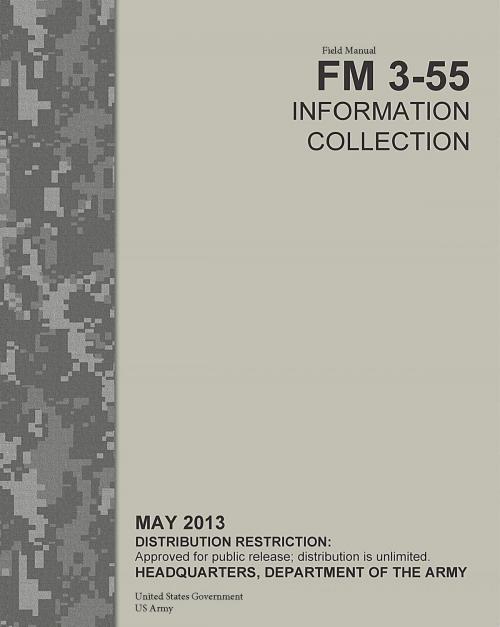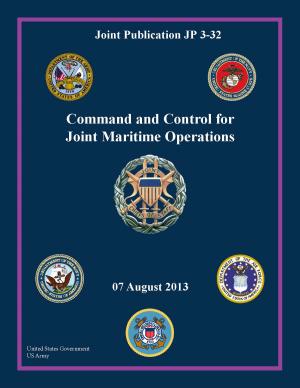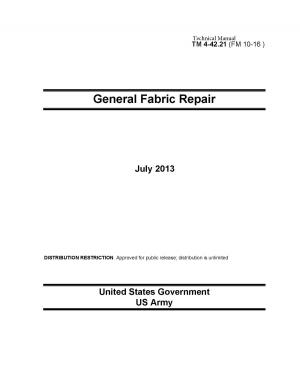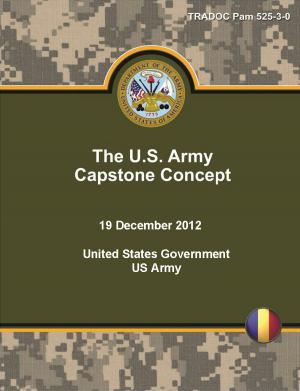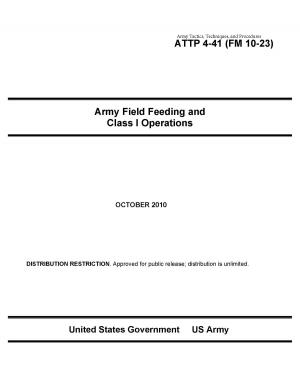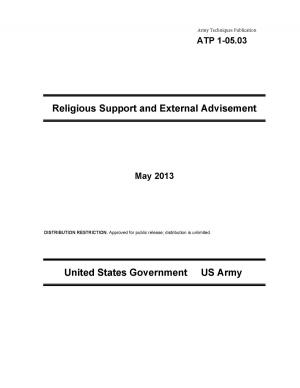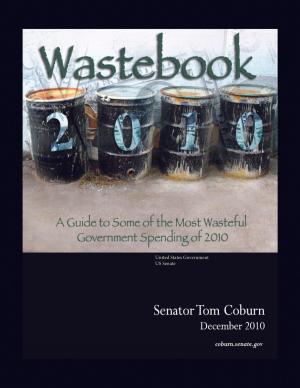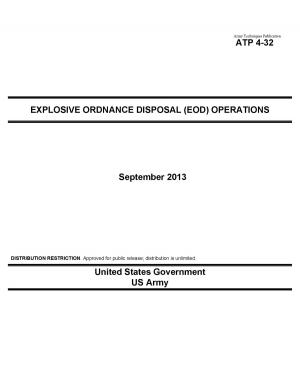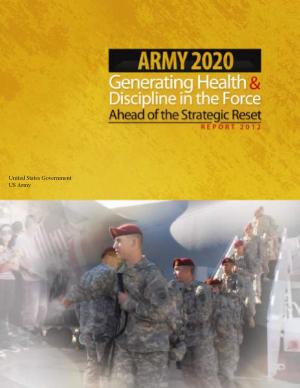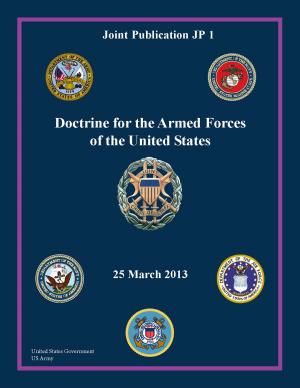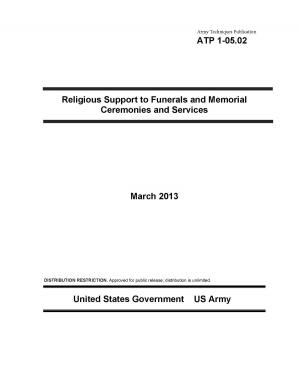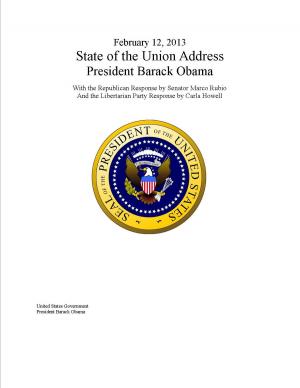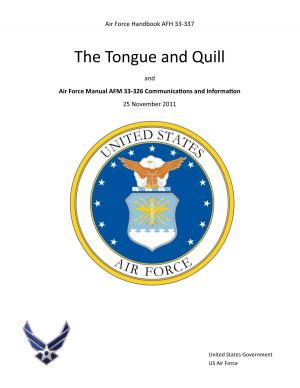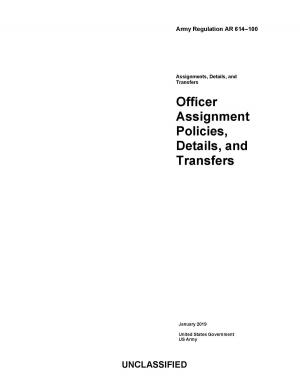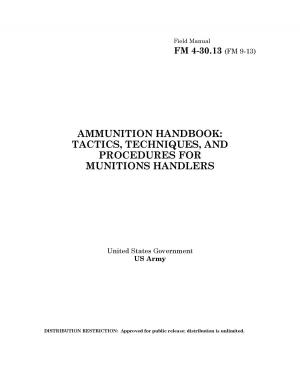Field Manual FM 3-55 Information Collection May 2013
Nonfiction, Science & Nature, Technology, Military Science, History, Military, Strategy, United States| Author: | United States Government US Army | ISBN: | 1230000137668 |
| Publisher: | eBook Publishing Team | Publication: | June 1, 2013 |
| Imprint: | Language: | English |
| Author: | United States Government US Army |
| ISBN: | 1230000137668 |
| Publisher: | eBook Publishing Team |
| Publication: | June 1, 2013 |
| Imprint: | |
| Language: | English |
Field Manual (FM) 3-55, Information Collection, provides the tactics and procedures for information collection and the associated activities of planning requirements and assessing collection, tasking, and directing information collection assets. It also contains the actions taken by the commanders and staffs in planning, preparing, executing, and assessing information collection activities. As the Army fields new formations and equipment with inherent and organic information collection capabilities, it needs a doctrinal foundation to ensure proper integration and use to maximize capabilities.
The principal audience for FM 3-55 is all members of the profession of arms. Commanders and staffs of Army headquarters serving as joint task force or multinational headquarters should also refer to applicable joint or multinational doctrine concerning the range of military operations and joint or multinational forces. Trainers and educators throughout the Army will also use this manual.
FM 3-55 applies to the Active Army, Army National Guard/Army National Guard of the United States, and United States Army Reserve unless otherwise stated.
The proponent of FM 3-55 is the United States Army Combined Arms Center. The preparing agency is the
Combined Arms Doctrine Directorate, United States Army Combined Arms Center.
The Army currently has no unified methodology or overall plan to define or establish how it performs or supports information collection activities at all echelons. This publication clarifies how the Army plans, prepares, and executes information collection activities in or between echelons.
FM 3-55 emphasizes three themes. First, foundations of information collection that demonstrate information collection activities are a synergistic whole, with emphasis on synchronization and integration of all components and systems. Second, commanders and staff have responsibilities in information collection planning and execution. The emphasis is on the importance of the commander’s role. Finally, the planning requirements and assessing success of information collection is measured by its contributions to the commander’s understanding, visualization, and decisionmaking abilities.
With the exception of cyberspace, all operations will be conducted and outcomes measured by effects on populations. This increases the complexity of information collection planning, execution, and assessment and requires more situational understanding from commanders. The staff is part of information collection activities and every Soldier collects and reports information. This field manual cannot provide all the answers. Its purpose is to prompt the user to ask the right questions. This FM complies with Doctrine 2015 guidelines.
Chapter 1 provides the Army definition of information collection and its relation to the joint construct of intelligence, surveillance, and reconnaissance.
Chapter 2 examines the roles and actions of the commander and staff in information collection planning and execution. This chapter also discusses the working group for information collection.
Chapter 3 describes information collection planning and information collection activities assessment.
Chapter 4 discusses information collection tasking and directing. The operations staff integrates collection assets through a deliberate and coordinated effort across all warfighting functions. Tasking and directing is vital to control limited collection assets.
Chapter 5 provides an overview of the information collection assets and capabilities available to Army commanders.
Chapter 6 examines joint intelligence, surveillance, and reconnaissance activities.
Appendix A provides instructions for preparing Annex L (Information Collection) in Army plans and orders.
Field Manual (FM) 3-55, Information Collection, provides the tactics and procedures for information collection and the associated activities of planning requirements and assessing collection, tasking, and directing information collection assets. It also contains the actions taken by the commanders and staffs in planning, preparing, executing, and assessing information collection activities. As the Army fields new formations and equipment with inherent and organic information collection capabilities, it needs a doctrinal foundation to ensure proper integration and use to maximize capabilities.
The principal audience for FM 3-55 is all members of the profession of arms. Commanders and staffs of Army headquarters serving as joint task force or multinational headquarters should also refer to applicable joint or multinational doctrine concerning the range of military operations and joint or multinational forces. Trainers and educators throughout the Army will also use this manual.
FM 3-55 applies to the Active Army, Army National Guard/Army National Guard of the United States, and United States Army Reserve unless otherwise stated.
The proponent of FM 3-55 is the United States Army Combined Arms Center. The preparing agency is the
Combined Arms Doctrine Directorate, United States Army Combined Arms Center.
The Army currently has no unified methodology or overall plan to define or establish how it performs or supports information collection activities at all echelons. This publication clarifies how the Army plans, prepares, and executes information collection activities in or between echelons.
FM 3-55 emphasizes three themes. First, foundations of information collection that demonstrate information collection activities are a synergistic whole, with emphasis on synchronization and integration of all components and systems. Second, commanders and staff have responsibilities in information collection planning and execution. The emphasis is on the importance of the commander’s role. Finally, the planning requirements and assessing success of information collection is measured by its contributions to the commander’s understanding, visualization, and decisionmaking abilities.
With the exception of cyberspace, all operations will be conducted and outcomes measured by effects on populations. This increases the complexity of information collection planning, execution, and assessment and requires more situational understanding from commanders. The staff is part of information collection activities and every Soldier collects and reports information. This field manual cannot provide all the answers. Its purpose is to prompt the user to ask the right questions. This FM complies with Doctrine 2015 guidelines.
Chapter 1 provides the Army definition of information collection and its relation to the joint construct of intelligence, surveillance, and reconnaissance.
Chapter 2 examines the roles and actions of the commander and staff in information collection planning and execution. This chapter also discusses the working group for information collection.
Chapter 3 describes information collection planning and information collection activities assessment.
Chapter 4 discusses information collection tasking and directing. The operations staff integrates collection assets through a deliberate and coordinated effort across all warfighting functions. Tasking and directing is vital to control limited collection assets.
Chapter 5 provides an overview of the information collection assets and capabilities available to Army commanders.
Chapter 6 examines joint intelligence, surveillance, and reconnaissance activities.
Appendix A provides instructions for preparing Annex L (Information Collection) in Army plans and orders.
